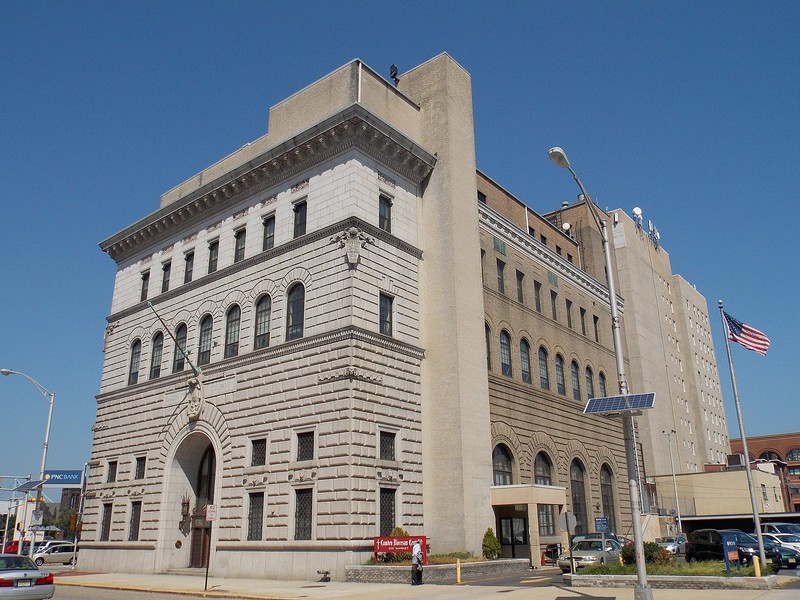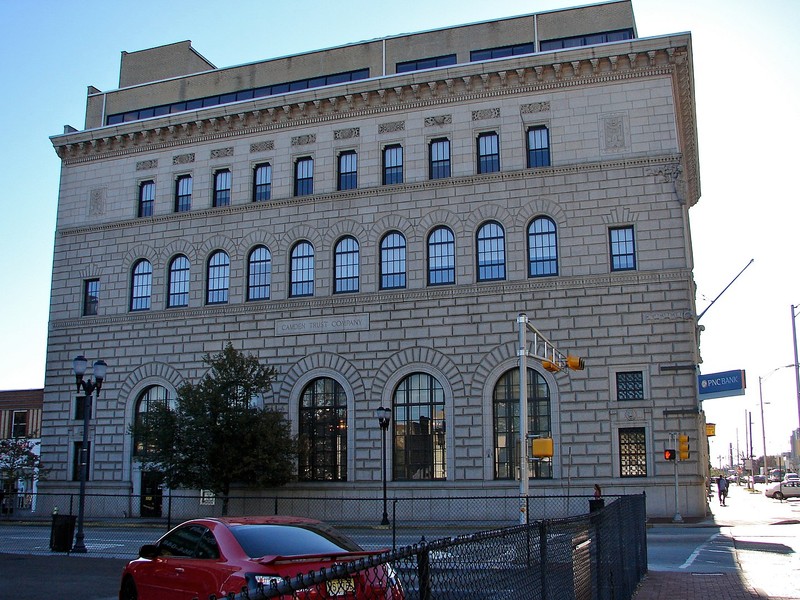Camden Safe Deposit & Trust Company
Introduction
Text-to-speech Audio
Images
Camden Safe Deposit & Trust Company (Camden Trust)

Camden Safe Deposit & Trust Company (Camden Trust)

Backstory and Context
Text-to-speech Audio
Camden Safe Deposit & Trust Company, designed by the Philadelphia Beaux-Arts architectural firm of Rankin & Kellogg, represents Camden's oldest trust company. The bank's founding occurred in 1873, and the historic building opened in 1929. Camden Safe Deposit absorbed other Camden banks during the 1920s and the Great Depression of the 1930s, allowing it to emerge as one of the city's three banks by 1940 (and South Jersey's largest for nearly half a century).
Samuel H. Grey, who became New Jersey Attorney General; William J. Sewell, railroad industrialist and later U.S. Senator; Charles P. Stratton, New Jersey Supreme Court Justice; and Congressman John F. Starr founded Camden Insurance Safe Deposit & Trust Company in 1873. (Starr served as the first president.) One year after opening, the bank dropped the "insurance" portion of the name.
In 1922, Camden Safe Deposit & Trust Company had for several years stood as southern New Jersey's largest bank, only to be displaced by the merger of two other Camden banks (First National and National State). Despite the slide from first to second, Camden Safe's growth continued and pushed its members to build a much bigger space for its headquarters. In 1927 and 1929, respectively, Camden Safe absorbed the Central Trust Company and Security Trust Company (two banks that had been in operation since the nineteenth century) to further its growth.
Camden Safe Deposit & Trust Company had weathered the financial panic of 1873 and subsequent recessions. Unbeknownst to the bank's directors, they purchased the land for a new, larger headquarters in 1927 before facing their biggest test -- The Great Depression. They contracted with Rankin & Kellogg, one of Philadelphia's leading Beaux-Arts architectural firms, who had also designed in Camden several commercial office buildings, residences, and public buildings such as the County Court House. Though the new space opened in 1930, just as the Great Depression had commenced, its abundance of marble, granite, and bronze conveyed a 1920s attitude of wealth and success, notably among banks. By the end of the 1930s, Camden Safe Deposit & Trust shortened its name to Camden Trust and absorbed fifteen different banks. Camden Trust proved to be one of three banks to survive the Depression. In fact, by 1948, Camden Trust celebrated its seventy-fifth anniversary as South Jersey's leading bank (again) in terms of deposits.
Today, the building is occupied by PNC Bank and the Catholic Diocese of Camden. (Although, the Diocese filed for bankruptcy in 2020 due to financial losses tied to the COVID19 global pandemic and numerous lawsuits. The status of its place in the building beyond 2021 is unknown.) But, the Camden Trust Company name remains prominent in the brick above the front door. The building stands as a reminder of an era when Camden emerged as a leading Philadelphia suburb and a South Jersey financial hub, and one of the top banks that made it so.
Sources
Admin, Clio and Mathew Powers. "Central Trust Company." Clio: Your Guide to History. January 18, 2021. Accessed January 18, 2021. https://www.theclio.com/entry/124732.
Cohen, Phil. "Camden, New Jersey: Camden Trust" dvrbs.com. Accessed January 18, 2021. http://24.111.17.162/camden-bank/CamdenNJ-Banks-CamdenTrust.htm.
Thompson, Priscilla M. and Franklyn M. Thompson. "Central Trust Company" National Register of Historic Places. nps.gov. January 5, 2005. https://npgallery.nps.gov/GetAsset/05a89418-decc-4939-94d4-4ad17610d030/.
By Farragutful - Own work, CC BY-SA 4.0, https://commons.wikimedia.org/w/index.php?curid=43009233
By Smallbones - Own work, Public Domain, https://commons.wikimedia.org/w/index.php?curid=11438941
